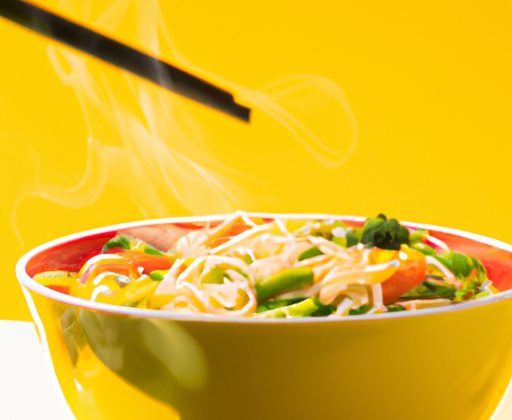Introducing Sustainable Food Packaging: A Greener Way to Store and Transport Food
Hello there, friends! Are you tired of seeing wasteful, non-recyclable packaging pile up in your kitchen or local landfill? Well, have no fear, because sustainable food packaging is here! But, what exactly is sustainable food packaging, you may ask? Simply put, it’s a type of packaging that is environmentally friendly and doesn’t harm the Earth. This can be in the form of biodegradable, reusable, or compostable materials. The benefits of sustainable food packaging are vast and significant. Not only does it reduce waste and pollution, but it can also decrease the carbon footprint of food packaging and transportation. Plus, it can be a great marketing tool for businesses looking to appeal to eco-conscious consumers. There are a few different types of sustainable food packaging to consider. Biodegradable packaging is made from materials that naturally degrade over time, like cellulose or plant-based plastics. Reusable packaging, on the other hand, can be used multiple times, like glass jars or metal tins. Compostable packaging is similar to biodegradable packaging, but can break down further and create nutrient-rich soil. Unfortunately, implementing sustainable food packaging can come with its own set of challenges, primarily cost and consumer buy-in. Sustainable materials can be more expensive to produce, which can make it difficult for businesses to transition. Additionally, consumers may not understand the value or importance of sustainable packaging, and may continue to choose less eco-friendly options. However, there are solutions to these challenges. Government regulations and incentives can encourage businesses to adopt sustainable packaging, while innovative business models, like circular economy models, can prioritize sustainability while still being cost-effective. In conclusion, sustainable food packaging is a crucial step towards a greener future. By reducing waste and pollution, decreasing carbon footprints, and appealing to eco-conscious consumers, sustainable packaging can benefit both the planet and businesses. So, let’s make the switch to sustainable food packaging today!
Types of Sustainable Food Packaging: Let’s Break it Down
When it comes to sustainable food packaging, there are a few different types you can choose from. Each has its own unique benefits and challenges, so it’s important to understand what you’re working with.
Biodegradable Packaging: Biodegradable packaging is designed to break down quickly and safely after use. These materials are usually made from plant-based materials such as cornstarch, sugarcane, or potato starch. They can be used for a range of products, from bags and pouches to plates and cutlery. While biodegradable packaging is a great option for reducing waste, it’s important to ensure it’s disposed of properly. Otherwise, it could end up in landfills and take just as long to break down as traditional plastic packaging.
Reusable Packaging: Reusable packaging is another great option for reducing waste. This type of packaging includes things like glass jars, metal tins, and fabric bags. By using these materials, you can cut down on the amount of waste produced by single-use packaging. However, reusable packaging usually comes with a higher upfront cost, since you’ll need to invest in durable materials that can be used over and over again.
Compostable Packaging: Compostable packaging is designed to break down quickly and safely in a composting environment. These materials are usually made from things like plant fibers, cornstarch, and bagasse (a byproduct of sugarcane processing). Compostable packaging is a great option for reducing waste, but it’s important to ensure it’s disposed of properly. If it’s sent to a landfill, it may not break down as quickly or at all.

By understanding the different types of sustainable food packaging available, you can make an informed decision about what will work best for your needs. Each type has its own unique benefits and challenges, so it’s up to you to decide what fits best with your sustainability goals.
Challenges to Implementing Sustainable Food Packaging
Let’s be real, implementing sustainable food packaging is not an easy feat. There are major challenges that companies face when trying to make the switch, and being aware of these challenges is the first step towards addressing them.
Cost
One of the biggest challenges of sustainable food packaging is cost. Often, eco-friendly packaging is more expensive to produce than traditional packaging. This means that businesses have to decide whether to absorb the extra cost or find ways to pass it on to their customers. Either way, it’s a difficult decision and could potentially hurt the bottom line.
Consumer Buy-in
Another major challenge in implementing sustainable food packaging is getting consumers to buy in. While there is a growing awareness of the importance of sustainability, many customers are still more concerned with convenience and price than with sustainability. For example, while reusable packaging is eco-friendly, many customers are not willing to go through the extra steps of returning their packaging or carrying around a container, even if it means helping the environment.
That being said, there are solutions to these challenges, and companies can take steps to address them head-on.
Solutions to the Challenges
Now, let’s talk about how we can overcome the challenges of implementing sustainable food packaging. It’s clear that the cost of sustainable packaging can be a major hurdle, but there are solutions out there. One way to address cost is through government regulations that incentivize sustainable packaging. For example, governments can provide tax breaks for companies that use sustainable packaging or penalize those who use non-sustainable materials. Such policies can create a more level playing field and help to push businesses towards more sustainable practices. Another strategy is to develop innovative business models that focus on sustainability. One example is the “circular economy,” which emphasizes creating closed-loop systems where waste materials from one process are used as inputs for another. By designing products and packaging with this circular approach in mind, companies can reduce the amount of waste they produce and minimize the need for new raw materials. Consumer buy-in is also a challenge, as many people are not yet accustomed to the idea of sustainable packaging. One solution is to use education and marketing to help consumers understand the benefits of sustainable packaging and encourage them to make more sustainable choices. Companies can use social media, targeted ads, and labeling to raise awareness of sustainable packaging options and highlight the positive impact of choosing these options. Ultimately, there is no single solution to the challenges of sustainable food packaging. Instead, we need to pursue a combination of approaches that address cost, consumer behavior, and policy. By working together, we can create a future where sustainable food packaging is the norm, not the exception.
Conclusion: Wrap It Up, Sustainable Style!
Well, folks, it’s been a wild ride exploring sustainable food packaging. From defining what it is, to highlighting its benefits, to exploring the various types available today, we have covered a lot of ground.One thing is clear: sustainable food packaging presents a significant opportunity to reduce waste, conserve resources, and protect our environment. However, it also poses some challenges. Costs can be a deterrent to adopting sustainable food packaging, and consumer buy-in is critical to the success of such initiatives.But there are solutions. Government regulations can incentivize businesses to adopt sustainable food packaging practices. Innovative business models can create a win-win situation for all stakeholders. And, most importantly, educating and engaging consumers is essential to building a sustainable food packaging future.So, as we wrap up this discussion, let’s remember that sustainable food packaging is not just about reducing our carbon footprint; it’s about reshaping how we think about and design our food production and consumption systems. It’s about making better choices, taking more responsibility for our actions, and striving towards a more resilient and equitable future for all. Let’s embrace sustainable food packaging and say goodbye to wasteful, outdated practices. Together, we can make a difference.
FAQs on Sustainability Preservation
Why reusable food packaging has a promising future?
Well folks, let me tell you, reusable food packaging is the bee’s knees! It’s the future of food preservation, no doubt about it. Why you ask? Well, first off, it’s a more sustainable option compared to single-use packaging. We all know how much plastic waste is piling up in landfills and oceans, and reusable food packaging helps tackle that problem. Plus, you can use it over and over again, saving you money in the long run. But that’s not all, pals. Reusable food packaging also helps keep your food fresher for longer! Say goodbye to wilted lettuce and stale crackers. You can keep your food airtight and in good condition, with no worries about any chemicals leaching into your food either. And let’s be real, nothing is worse than opening up a broken chip bag or spilled soup container in your lunchbox, but with reusable packaging, that’s a thing of the past!By using reusable food packaging, we can make small but impactful changes in our daily lives, benefiting both our wallets and the environment. It’s a win-win situation, folks! So come on, join the eco-friendly bandwagon and invest in some durable and practical reusable food packaging. Your taste buds (and the planet) will thank you.
What is the future of biodegradable food packaging?
The future of biodegradable food packaging is looking bright! With people becoming more aware of their impact on the environment, there is a growing demand for sustainable alternatives. Biodegradable packaging made from materials like plant fibers, algae, and starches can break down naturally in the environment, reducing pollution and waste. Manufacturers are developing these options to be just as durable and effective as traditional packaging, so you don’t have to sacrifice functionality for sustainability. However, it’s important to note that while biodegradable packaging is a step in the right direction, it’s not a perfect solution. We still need to focus on reducing overall packaging waste and properly disposing of any packaging we use to ensure it can break down properly.
Why is food packaging valuable to food preservation?
Food packaging plays a crucial role in preserving food for extended periods. Without proper packaging, food would spoil or be contaminated quickly, rendering it unsafe for consumption. Packaging helps protect food from bacteria, oxygen, and other environmental factors that promote spoilage. It also preserves the quality, nutritional value, and flavor of the food. Additionally, food packaging offers convenience, making it easier for consumers to transport and store food. However, overreliance on harmful packaging materials has resulted in significant environmental challenges, including landfill waste, ocean pollution, and greenhouse gas emissions. Therefore, adopting sustainable food packaging solutions is critical to preserving our planet’s natural resources.

